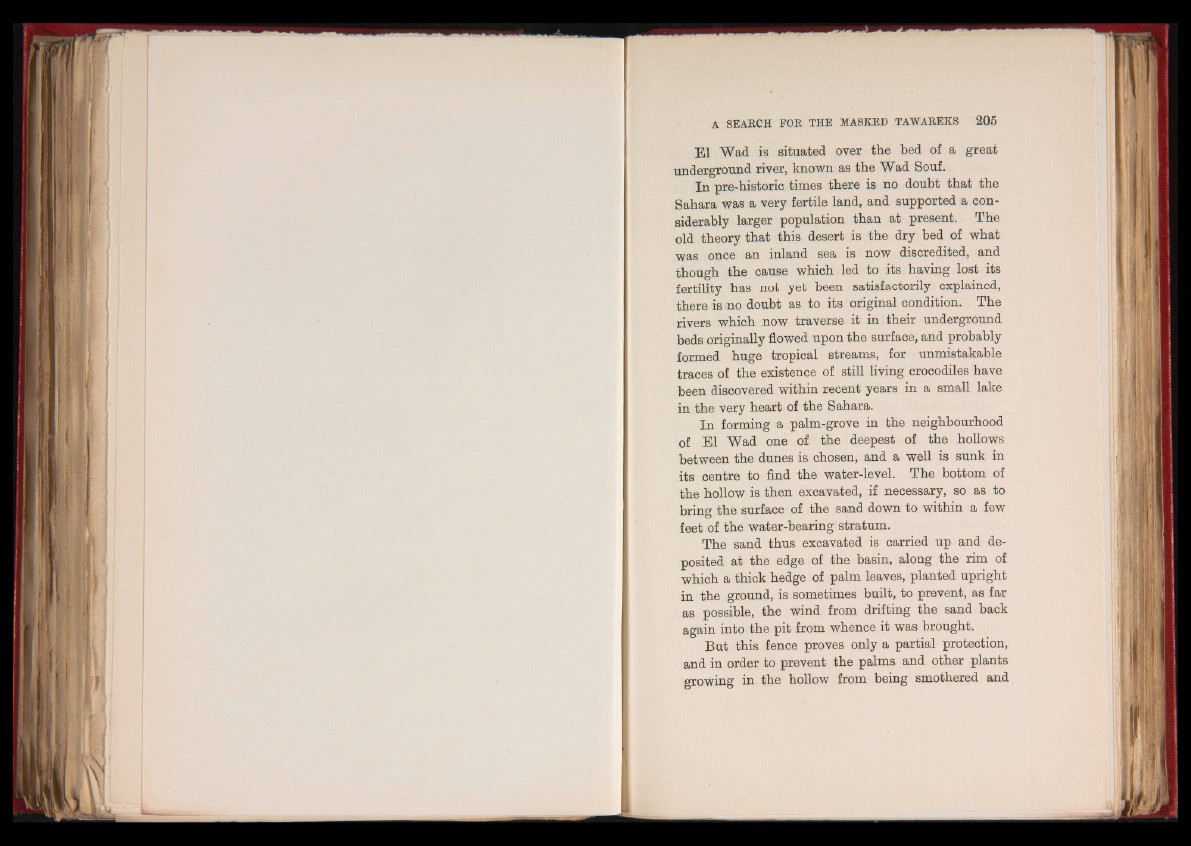
El Wad is situated over the bed of a great
underground river, known as the Wad Souf.
In pre-historic times there is no doubt that the
Sahara was a very fertile land, and supported a considerably
larger population than at present. The
old theory that this desert is the dry bed of what
was once an inland sea is now discredited, and
though the cause which led to its having lost its
fertility has not yet been satisfactorily explained,
there is-no doubt as to its original condition. The
rivers which now traverse it in their underground
beds originally flowed upon the surface, and probably
formed huge tropical streams, for unmistakable
traces of the existence of still living crocodiles have
been discovered within recent years in a small lake
in the very heart of the Sahara.
In forming a palm-grove in the neighbourhood
of El Wad one of the deepest of the hollows
between the dunes is chosen, and a well is sunk in
its centre to find the water-level. The bottom of
the hollow is then excavated, if necessary, so as to
bring the surface of the sand down to within a few
feet of the water-bearing stratum.
The sand thus excavated is carried up and deposited
at the edge of the basin, along the rim of
which a thick hedge of palm leaves, planted upright
in the ground, is sometimes built, to prevent, as far
as possible, the wind from drifting the sand back
again into the pit from whence it was brought.
But this fence proves only a partial protection,
and in order to prevent the palms and other plants
growing in the hollow from being smothered and